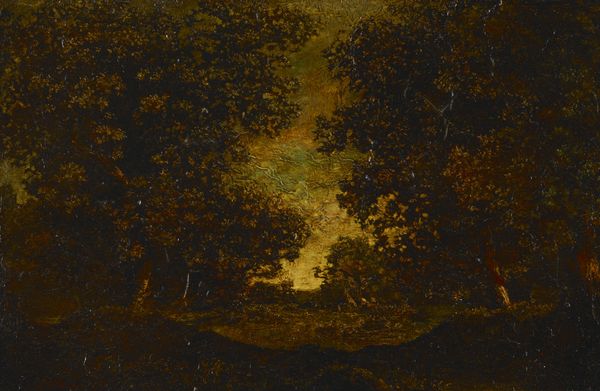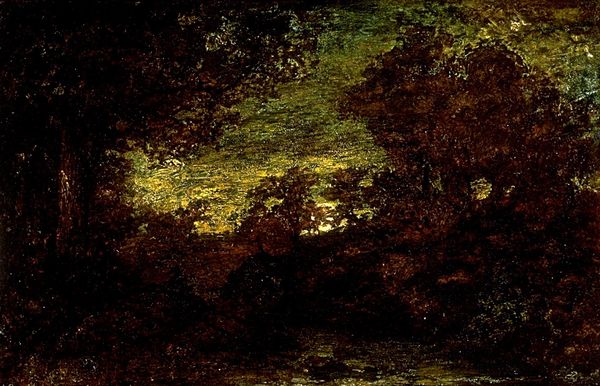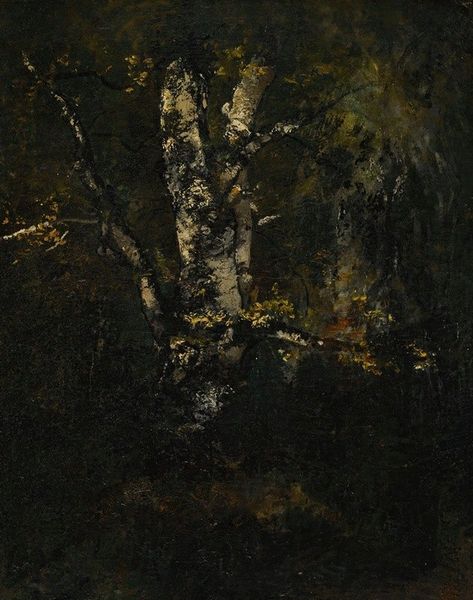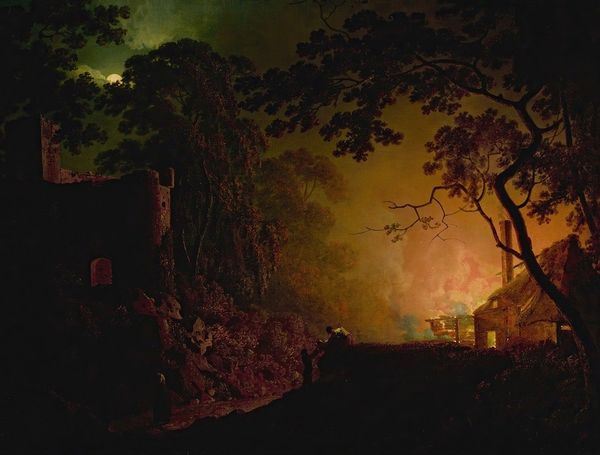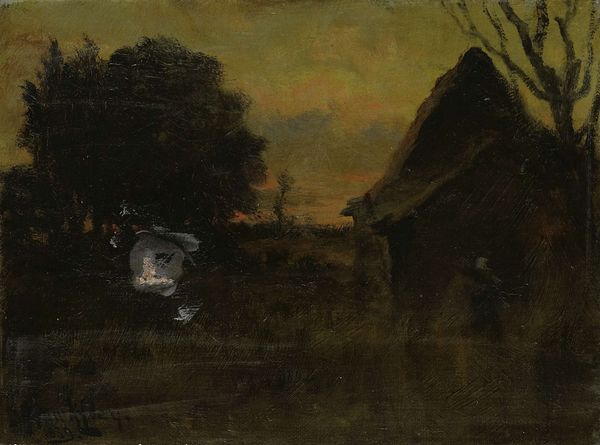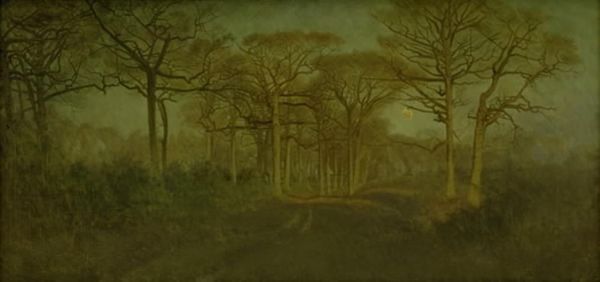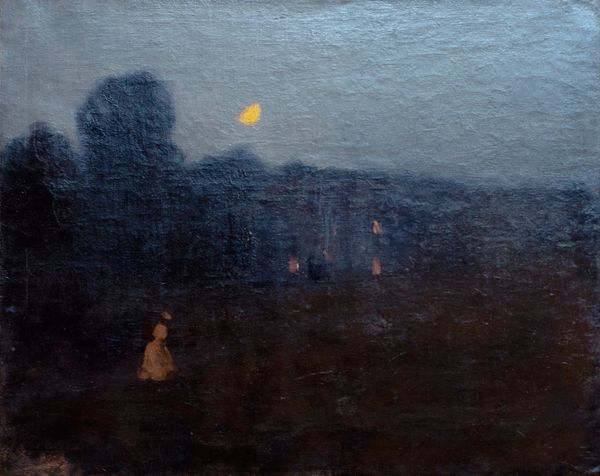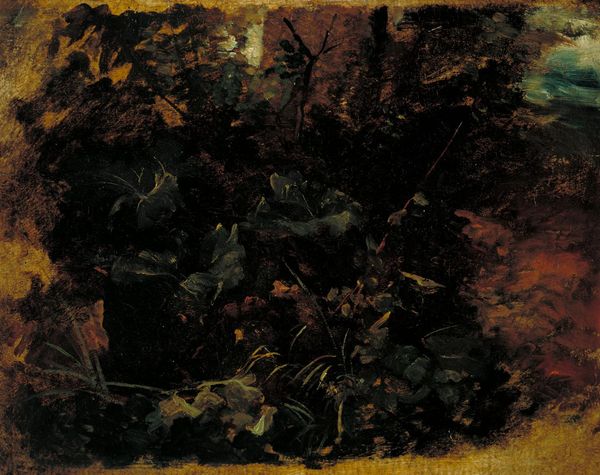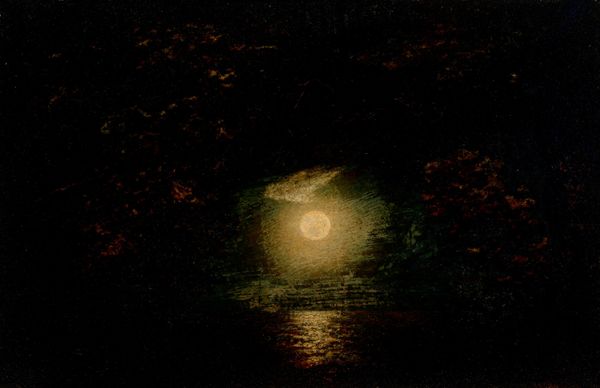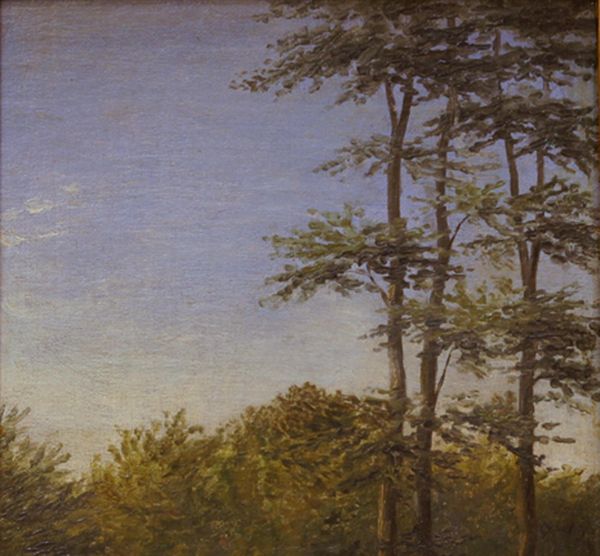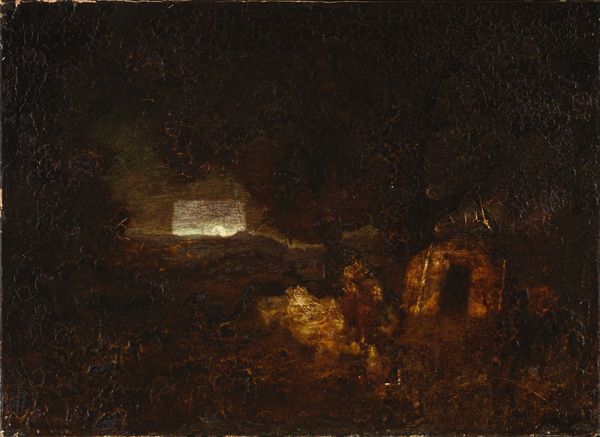
Dimensions: 69 cm (height) x 63 cm (width) (Netto)
Curator: This is "Kæltringbal. Blicher ved taterhytten," painted by Hans Smidth in 1902. Editor: It's dark. Eerily so. Mostly blacks and deep browns, punctuated by this sliver of golden light leaking from what looks like a crude window. Curator: Yes, Smidth employs that tenebristic style beautifully, doesn't he? It creates this intense drama, drawing attention to the themes he’s exploring – societal outsiders, the romanticism of the marginalized… Think about the public reception; imagine exhibiting the life of nomadic people like this at the Statens Museum for Kunst. What statement does that make about the institution itself? Editor: Makes me think about labor. The artist’s labor of course—the patient build-up of dark layers. But even more, I am thinking of what physical exertion it took to construct that ramshackle hut that is implied beyond the small patch of illumination? Someone cut those trees, someone chinked the gaps in the timbers… It makes me wonder what are their modes of production beyond this structure that suggests meager materials. Curator: It’s interesting you highlight that. Smidth often depicted the lives of marginalized groups. He invites viewers to contemplate not just their living conditions, but the wider social forces at play. His own position within Danish society and the power dynamics inherent in observing and representing others comes into play. Editor: Do you think the dark palette reflects the limited available and affordable materials, that Smidth's own access as an artist played into the availability and thus execution of these dark moody landscapes, since it dictates, visually, who is on the outside literally and symbolically, but the fact the work even exists opens up possibilities about the inside. Curator: Certainly, those considerations contribute to the artwork's complexity, don’t they? This work challenges romantic notions about rural life. By confronting viewers with poverty and social inequality, Smidth’s realism is stark. He really engages the visual codes that challenge norms around beauty in his day. Editor: I see your point, it reminds me there's always material agency at play; Smidth's skill brings us to the intersection where choices – socio-economic, aesthetic, environmental, meet the limits of the pigments on his palette to tell a deeper story about both art and social standing. Curator: Indeed, the layers continue to unfurl upon closer observation, offering a richer, more nuanced understanding of the human condition and the role art plays in illuminating its hidden corners.
Comments
No comments
Be the first to comment and join the conversation on the ultimate creative platform.
